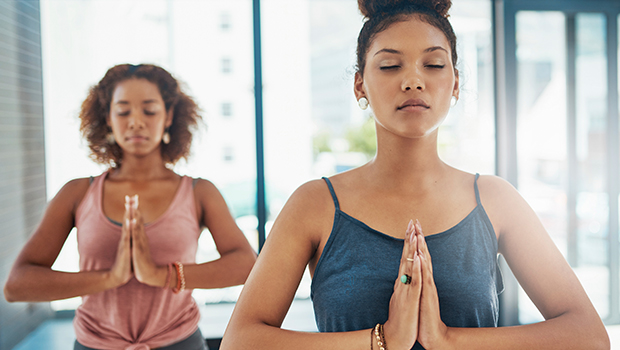
Meditation has tons of health benefits—and it’s easier to do than you might think.
If you’re feeling stressed out, meditation may be just what you need. It doesn’t take hours or tons of practice to start gaining the benefits of this calming exercise. You can reap the rewards in as little as five minutes. And perhaps most surprising? Meditating doesn’t always mean sitting somewhere quiet with your eyes closed.
What you’re doing when you meditate, in whatever form, is stepping out of your day long enough to reorient your mind and body. This allows you to return with renewed perspective, focus and energy, instead of just being stuck in a cycle of stress.
Try one of these three simple ways to add some meditative time to your day.
Take stock
At day’s end, write down everything you did: brushing your teeth, making school lunches, commuting, meetings, the gym, phone calls. Next to each, write whether the activity was replenishing, depleting or neutral. Some things will be obvious, while moments that nourish may surprise you – such as the sight of that neatly packed lunch or the daily hellos you exchange at the coffee shop. The goal is to insert more nourishing moments into your days, while turning depleting ones around. For instance, you can’t avoid the commute, but you can make it more calming by swapping talk radio for a book on tape or a podcast.
Schedule a mini meditation
Get comfortable wherever you are (sitting in your office chair or standing in your kitchen, for instance), and become aware of your mental state. What thoughts or emotions are present right now? Next, focus on your body, head to toe. Where are you feeling tension? Try to release it. Finally, focus on your breath. Doing so disrupts your mind and allows you to shift perspective. When you’re done, give yourself a moment to answer these questions: What do I need right now, and how can I integrate it into my day? It might just give you the boost you need to tackle the next meeting, the trip home, or whatever else is next on your agenda.
Get out of your head and onto your feet
For many of us, the day is spent more in our heads than it is in touch with our physical bodies. One way to get out of your head is to be aware of your feet on the ground (either at your desk or while taking a walk). Your feet are farthest from your head, so actually try to feel the pressure of the different parts of your feet on the ground. If you’re walking, take notice of how your weight shifts from foot to foot. Match your breath to your steps or movements.
 Mindful Sodexo
Mindful Sodexo 
0 Comments